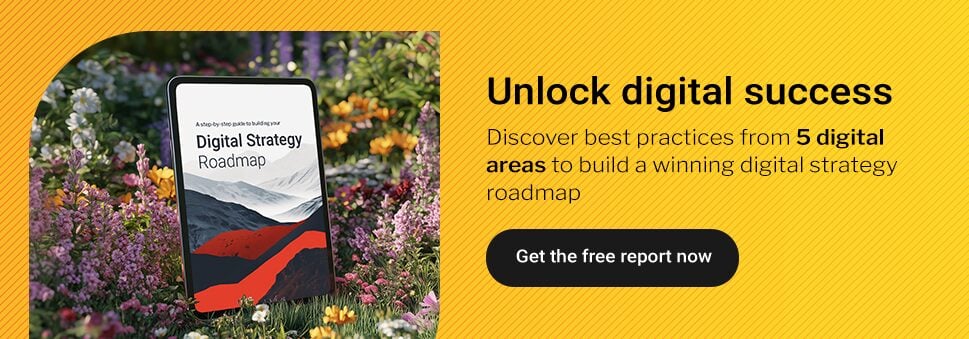Today, to be successful in ecommerce means to provide a unique and seamless shopping experience for your customers. Flexible payment options and financial solutions are an important part of the online shopping experience. Buy Now Pay Later for business is a great example of a flexible payment option that has gained substantial popularity over the last few years. This method is especially successful in attracting a broader customer base (like younger customers).
But what is Buy Now Pay Later for business (BNPL), and why is this payment model so successful?
BNPL is a flexible payment system allowing customers to pay for a purchase at intervals over a fixed period. The customer makes an initial payment to receive the wanted product or service. This is usually a small percentage of the total purchase.
Then, the customer will settle the remaining balance by paying manageable, interest-free installments. This encourages customers to make higher-value purchases that they might otherwise hesitate to make or not make at all, without having the burden of having to pay high interest fees afterward.
Buy Now Pay Later for business offers many advantages but comes with certain risks and challenges for both consumers and merchants. In this article, we will look at the pros and cons of BNPL to help you determine if this financial solution is right for your customers and tech stack.
TABLE OF CONTENTS
- What makes Buy Now Pay Later such an attractive payment option for consumers?
- Buy Now Pay Later for brands: Pros vs cons
- Will Buy Now Pay Later replace traditional credit cards in the future?
- Key takeaways: is BNPL a game-changer for brands?
- Meet our BNPL Partner Klarna
- How Vaimo can help
What makes Buy Now Pay Later such an attractive payment option for consumers?
Buy Now Pay Later offers financial convenience and flexibility for consumers. It allows consumers to get their desired (high-value) product without paying high upfront costs or any interest fees in the future.
This flexibility lets consumers tailor their payment terms to suit their needs and preferences, which applies to the whole process, from how much to pay upfront to choosing the length of the installment period. The global BNPL market, valued at $90.69 billion in 2020, is projected to surge to $3.98 trillion by 2030, expanding at a CAGR of 45.7%, underscoring its rapid adoption worldwide.
Buy Now Pay Later for brands: Pros vs cons
Now that we’ve looked at the advantages of BNPL for consumers, let’s look at the pros and cons for brands.
Pros of Buy Now Pay Later for business
1. BNPL can significantly boost conversion rates
One of the most important benefits of BNPL for brands is that it can significantly boost their conversion rates. This payment method facilitates manageable, interest-free installments, encouraging hesitant shoppers to complete their purchases.
2. BNPL can lead to a higher Average Order Value (AOV)
When customers can spread their payments over a longer period and only have to pay low upfront costs, they are more likely to add items to their shopping cart and shop more often. According to a study by Affirm, retailers using their BNPL services reported an average increase of 20% in conversions and 87% in Average Order Value (AOV).
3. BNPL optimizes and enhances the overall customer experience
Another advantage of BNPL is that it makes shopping more fun, accessible and less financially draining, making your brand attractive to a broader audience and opening up new opportunities for business growth. As customers get used to the convenience, flexibility, and advantages of BNPL, the chances of them searching for other retailers offering the same payment method increase. This allows you to tap into new customer segments and get actively promoted and featured on the website and social media feeds of your BNPL partner.
4. Brands receive the total value of each sale upfront, despite customers paying in installments
Last but not least, implementing BNPL means you will still receive the full purchase amount upfront, even though customers pay in installments. As a company, you do not need to worry about cash flow and the hassle of chasing up delayed payments, as your BNPL provider will take care of these aspects for you.
Now let’s explore some of the disadvantages of BNPL.
Cons of Buy Now Pay Later for business
1. BNPL services lead to higher merchant fees
As a BNPL service merchant, you will pay a merchant fee for every transaction completed (usually 2-8%) of the sale cost. These higher merchant fees can cut into profit margins.
2. Integration and accreditation challenges
You should be prepared for the integration and accreditation challenges in implementing a BNPL payment method. These challenges will demand resources and time for a seamless implementation.
3. Confusing terms due to many different BNPL providers
The large number of BNPL providers in the market can make merchants feel lost and confused because of varying deals and terms. It can be challenging and time-consuming for merchants to compare BNPL providers and choose the most suitable partner.
4. BNPL financing encourages consumer debt
While Buy Now Pay Later for business can boost sales immediately, it may lead to consumer debts and potential payment defaults. New EU regulations (Directive 2023/2225) tackle these risks by mandating affordability assessments and transparency, ensuring consumers can repay what they borrow. Nations must adopt these rules by October 30, 2025, compelling BNPL providers to revamp their operations. Brands must stay ahead of these changes to balance growth with responsible lending, securing their long-term viability in the market.
Will Buy Now Pay Later replace traditional credit cards in the future?
The landscape of payment methods is constantly evolving, and BNPL services are becoming increasingly popular among consumers and businesses. While some users believe it will replace credit cards, experts suggest otherwise. SoFi notes that BNPL and credit cards serve different purposes, making full replacement unlikely. Still, BNPL’s influence on consumer payments continues to rise.
BNPL offers a structured, interest-free way to manage payments, making it more attractive to budget-conscious shoppers and easier to qualify for with fewer credit checks. With fixed payments and no interest accumulation, BNPL helps avoid high-interest debt, providing a flexible financing option for larger purchases.
Key takeaways: is BNPL a game-changer for brands?
BNPL offers many possibilities for businesses to increase their Average Order Value (AOV) and enhance the customer experience by providing customers with payment flexibility. However, risks involved (high merchant fees and the risk of customers transitioning completely to BNPL) should be considered carefully.
The ongoing concerns regarding consumer debt spirals and the possibility of new regulations around these debts and BNPL indicate that brands should stay attentive in the evolving landscape.
Businesses should keep a close eye on these constant BNPL developments to maximize the benefits of BNPL and handle potential issues that could impact their financial performance.
Meet our BNPL Partner Klarna
Vaimo and Klarna partner together to help merchants worldwide drive ecommerce growth by implementing flexible payment options, such as Buy Now Pay Later for business (Klarna pay later), in their ecommerce architecture.
For example, Klarna Kustom was implemented on the NordicaGolf site, leading to significant conversion rate improvement and average order value (AOV) increases. Read more about this case study with Vaimo and Klarna.
How Vaimo can help
Buy Now Pay Later solutions are becoming more mainstream in the commerce payment ecosystem. At Vaimo, we help clients implement Buy Now Pay Later solutions to increase revenue and customer engagement. We can help you learn more about leveraging a Buy Now Pay Later payment method to build a seamless customer experience and increase revenue and loyalty. Get in touch with our team of experts today.








